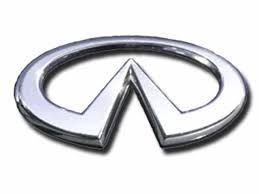M45x AWD V8-4.5L (VK45DE) (2008)
/Page-1281002.png)
CAUTION:
-
CFC-12 (R-12) refrigerant and HFC-134a (R-134a) refrigerant are not compatible. If the refrigerants are mixed and compressor
malfunction is likely to occur, refer to "CONTAMINATED REFRIGERANT" below. To determine the purity of HFC-134a (R-134a) in
the vehicle and recovery tank, use Refrigerant Recovery/Recycling Recharging equipment and Refrigerant Identifier.
-
Use only specified lubricant for the HFC-134a (R-134a) A/C system and HFC-134a (R-134a) components. If lubricant other than that
specified is used, compressor malfunction is likely to occur.
-
The specified HFC-134a (R-134a) lubricant rapidly absorbs moisture from the atmosphere. The following handling precautions must be
observed:
-
When removing refrigerant components from a vehicle, immediately cap (seal) the component to minimize the entry of moisture from
the atmosphere.
-
When installing refrigerant components to a vehicle, never remove the caps (unseal) until just before connecting the components.
Connect all refrigerant loop components as quickly as possible to minimize the entry of moisture into system.
-
Only use the specified lubricant from a sealed container. Immediately reseal containers of lubricant. Without proper sealing, lubricant
will become moisture saturated and should not be used.
-
Never allow lubricant (NISSAN A/C System Oil Type S) to come in contact with styrene foam parts. Damage may result.
CONTAMINATED REFRIGERANT
If a refrigerant other than pure HFC-134a (R-134a) is identified in a vehicle, take appropriate steps shown below:
-
Explain to the customer that environmental regulations prohibit the release of contaminated refrigerant into the atmosphere.
-
Explain that recovery of the contaminated refrigerant could damage service equipment and refrigerant supply.
-
Suggest the customer return the vehicle to the location of previous service where the contamination may have occurred.
-
In case of repairing, recover the refrigerant using only dedicated equipment and containers. Never recover contaminated refrigerant into the
existing service equipment. If the facility does not have dedicated recovery equipment, contact a local refrigerant product retailer for available
service. This refrigerant must be disposed of in accordance with all federal and local regulations. In addition, replacement of all refrigerant system
components on the vehicle is recommended.
-
If the vehicle is within the warranty period, the air conditioner warranty is void. Please contact Nissan Customer Affairs for further assistance.
General Refrigerant Precaution
WARNING:
-
Avoid breathing A/C refrigerant and lubricant vapor or mist. Exposure may irritate eyes, nose and throat. Remove HFC-134a (R-134a)
from the A/C system, using certified service equipment meeting requirements of SAE J-2210 [HFC-134a (R-134a) recycling equipment],
or J-2209 [HFC-134a (R-134a) recovery equipment]. If accidental system discharge occurs, ventilate work area before resuming service.
Additional health and safety information may be obtained from refrigerant and lubricant manufacturers.
-
Never release refrigerant into the air. Use approved recovery/recycling equipment to capture the refrigerant every time an air
conditioning system is discharged.
-
Always wear eye and hand protection (goggles and gloves) when working with any refrigerant or air conditioning system.
-
Never store or heat refrigerant containers above 52 °C (126 °F).
-
Never heat a refrigerant container with an open flame; if container warming is required, place the bottom of the container in a warm pail
of water.
-
Never intentionally drop, puncture, or incinerate refrigerant containers.
-
Keep refrigerant away from open flames: poisonous gas will be produced if refrigerant burns.
-
Refrigerant will displace oxygen, therefore be certain to work in well ventilated areas to prevent suffocation.
-
Never pressure test or leak test HFC-134a (R-134a) service equipment and/or vehicle air conditioning systems with compressed air during
repair. Some mixtures of air and HFC-134a (R-134a) have been shown to be combustible at elevated pressures. These mixtures, if ignited,
may cause injury or property damage. Additional health and safety information may be obtained from refrigerant manufacturers.
Precaution for Refrigerant Connection
A new type refrigerant connection has been introduced to all refrigerant lines except the following location.
-
Expansion valve to evaporator
-
Refrigerant pressure sensor to liquid tank
ABOUT ONE-TOUCH JOINT
Description
-
One-touch joints are pipe joints which do not require tools during piping connection.
-
Unlike conventional connection methods using union nuts and flanges, controlling tightening torque at connection point is not necessary.
-
When removing a pipe joint, use a disconnector.
COMPONENT PARTS
